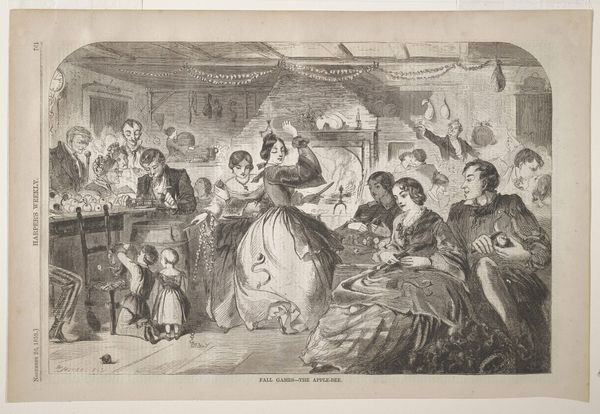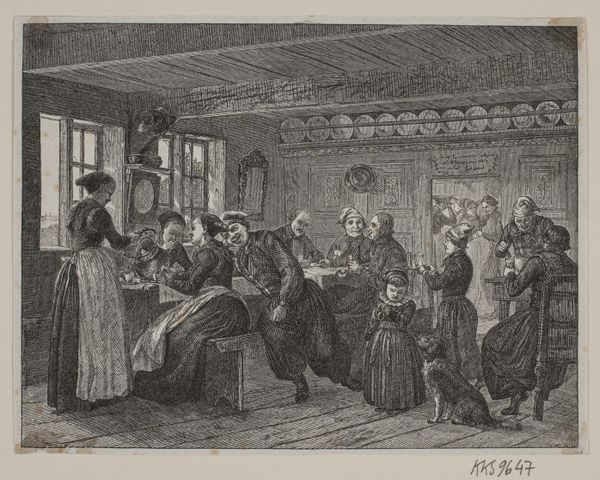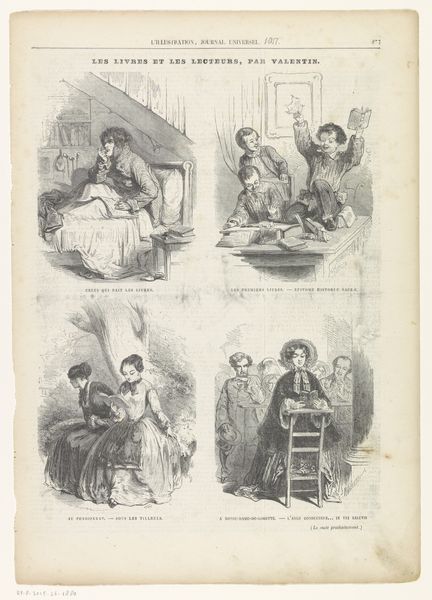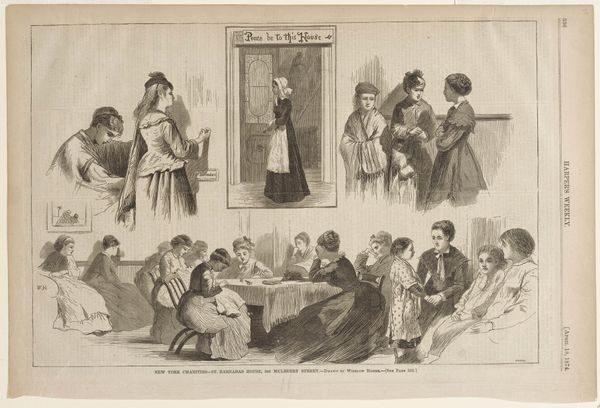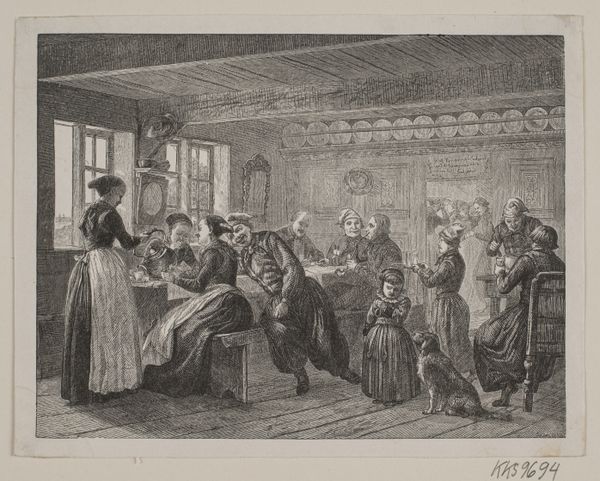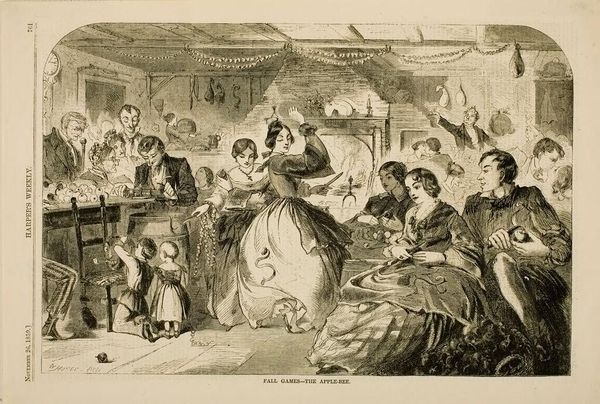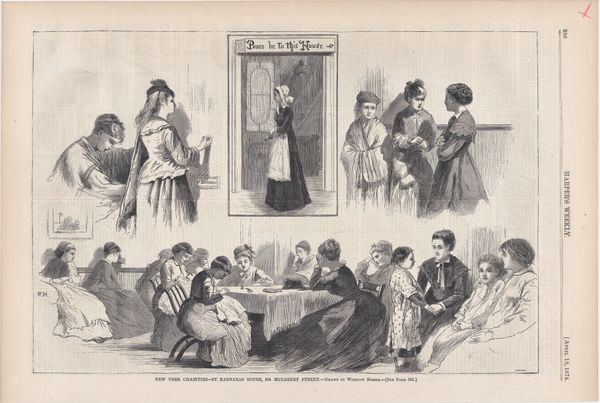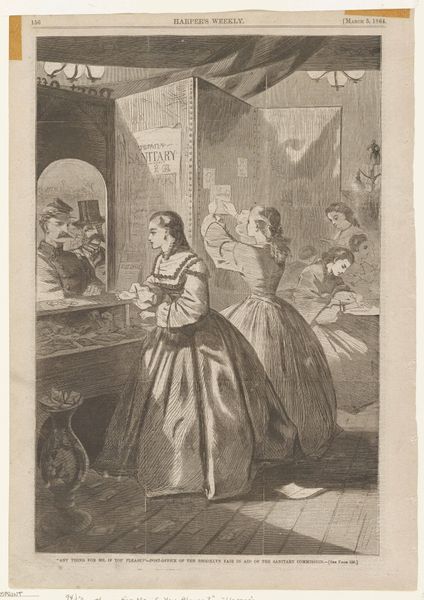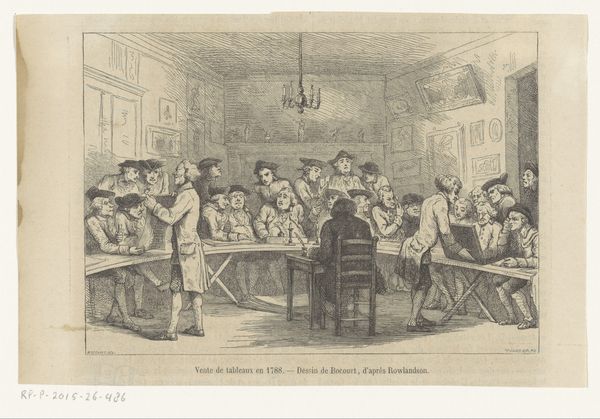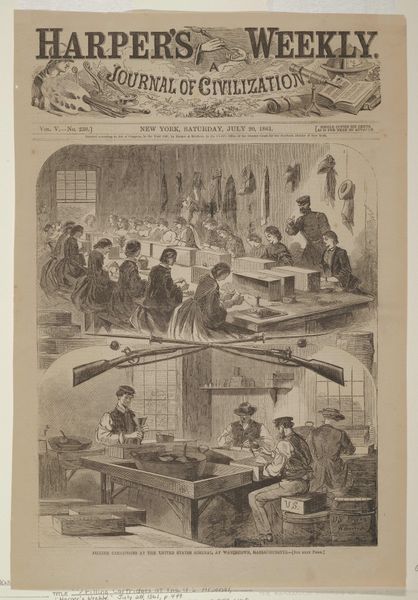
print, woodcut, wood-engraving, engraving
#
narrative-art
# print
#
pencil sketch
#
charcoal drawing
#
woodcut
#
genre-painting
#
wood-engraving
#
engraving
#
realism
Dimensions: 6 7/16 x 9 1/8 in. (16.4 x 23.2 cm)
Copyright: Public Domain
Curator: Today, we’re looking at "Thanksgiving Day—The Dance," a wood engraving created by Winslow Homer in 1858. It resides here at the Minneapolis Institute of Art. What are your initial thoughts? Editor: Well, my first thought is one of almost dizzying energy. The eye darts around trying to catch everyone in mid-swirl. It feels almost frenetic in its capturing of movement and revelry. Curator: Absolutely! And notice how Homer juxtaposes this energetic scene with an earlier moment from the same Thanksgiving Day? The engraving is split into two distinct panels; the upper shows the Thanksgiving meal with a servant in attendance, while below, the dance unfolds. It suggests a progression from formal dinner to boisterous celebration. Editor: And the shift in light between the panels really emphasizes that. Up above, a solemn, bright exposure; below, shadow and candelight to conjure up this folk, familial feeling. Curator: Precisely! Now, given that this piece is a wood engraving printed in Harper's Weekly, a popular periodical of the time, think about its consumption. This wasn’t some precious artwork sequestered in a gallery, but something mass-produced and widely disseminated, brought directly into people's homes and shaping their very perceptions of American domesticity and holiday celebrations. It certainly democratizes artistic exposure. Editor: It definitely democratized the distribution of *images*. I do wonder how the laborers felt crafting so many identical scenes to promote bourgeois celebration. Was it grueling work, churning out idealized family images in a culture with vast inequality and the violence of enslavement? These mass-produced works weren't free of social context or political implications just because they appear on the pages of popular periodicals, or reflect folk joy. Curator: That’s a powerful point to consider – the inherent contradictions in showcasing a scene of Thanksgiving revelry within a society grappling with significant social stratification. To that point, although presented as genre painting, some scholars believe Homer imbued social commentary even here, however subtle. As in much of his work. It shows you there's an endless well for introspection in something as simple as an old engraving. Editor: Yes! There's just a quiet melancholy to be found. The material means a particular circulation and reach. But in truth, the reality for the many engravers producing the piece—and the many viewers who were shut out from this kind of holiday abundance-- is the stark undercurrent that drives the image.
Comments
No comments
Be the first to comment and join the conversation on the ultimate creative platform.


